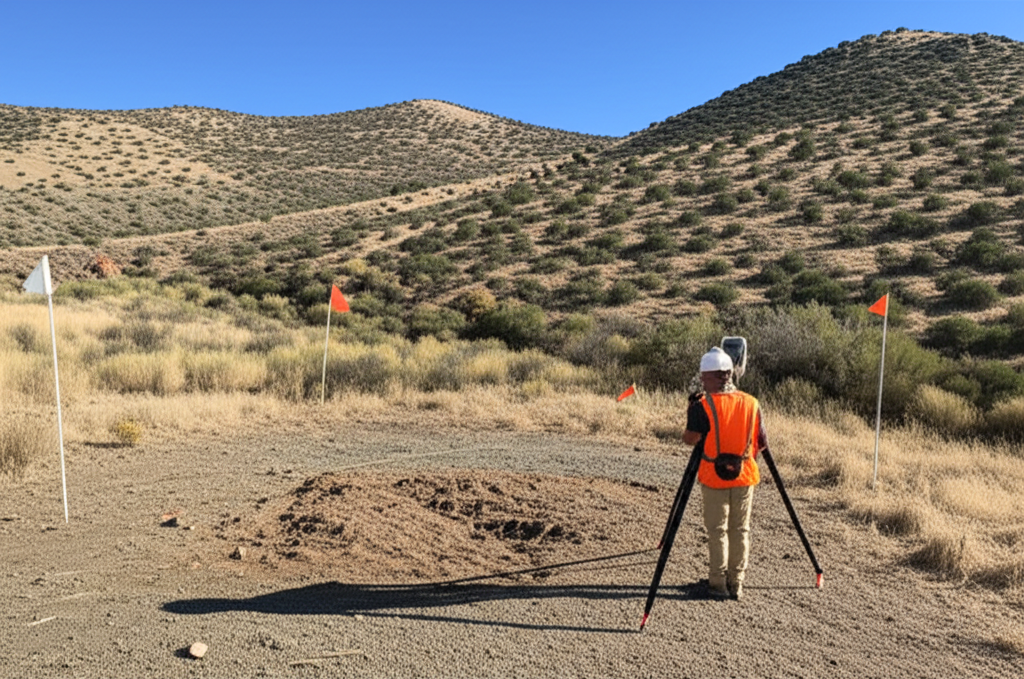20-Acre Claims: Why This Size Is the Sweet Spot
Why are so many claims 20 acres? It's not just a legal maximum for individuals — it's also the most manageable size for small-scale miners.

If you've been browsing gold mining claims for sale, you've likely noticed a pattern: the vast majority are 20 acres in size. This isn't a coincidence or a marketing gimmick—it's the result of both legal requirements and practical considerations that have made 20-acre claims the standard unit for individual prospectors and small-scale miners.
The Legal Foundation: 20 Acres as a Maximum
The 20-acre standard traces back to the General Mining Law of 1872, which remains the foundation of mining claim regulations in the United States. Under this law, a standard lode claim (for mineral veins in solid rock) can be up to 1,500 feet long and 600 feet wide, covering approximately 20.66 acres. For placer claims (covering loose material like sand and gravel), the law established a maximum of 20 acres per claim for an individual.
While associations of multiple individuals can stake larger claims (up to 160 acres for eight people), the 20-acre unit became the standard building block for mining claims on federal land. This standardization has persisted for over 150 years, creating a consistent framework for claim staking, recording, and transfer.
Practical Advantages of 20-Acre Claims
Beyond legal requirements, the 20-acre size offers several practical advantages that have cemented its status as the "sweet spot" for recreational and small-scale miners:
1. Manageable Size for Individual Miners
Twenty acres provides enough territory to be worthwhile without being overwhelming for an individual or small group. For context, 20 acres is approximately the size of 15 football fields. When this acreage includes a section of river or creek (often 1,000-1,500 linear feet), it offers plenty of ground to explore and work over many years.
For weekend prospectors and recreational miners, a claim of this size provides enough variety to prevent boredom while remaining small enough to become intimately familiar with over time. You can realistically learn the specific features, gold traps, and productive areas throughout a 20-acre claim.

2. Affordable Annual Maintenance
Each mining claim requires payment of an annual maintenance fee to the Bureau of Land Management (BLM), currently $180 per claim. This flat fee applies regardless of claim size, making larger claims more cost-effective per acre. However, for individual miners, a single 20-acre claim strikes the right balance between having sufficient territory and keeping annual costs reasonable.
For those owning multiple claims, the annual fees can add up quickly. Four 20-acre claims would cost $720 annually to maintain, representing a significant commitment for a recreational miner.
3. Optimal River Frontage
For placer claims along rivers and creeks—the most common type for recreational gold miners—a 20-acre claim typically includes 1,000-1,500 feet of river frontage. This length provides excellent variety in working environments, from riffles and rapids to calm pools, inside bends, and gravel bars.
This amount of river frontage is substantial enough to include multiple types of gold-trapping features while remaining manageable for exploration and systematic mining. It's enough territory that you can work different sections as water levels change throughout the year.
4. Simplified Claim Management
Smaller claims are easier to mark, maintain, and defend against potential claim jumpers. With a 20-acre claim, you can reasonably walk the entire boundary in a short time and maintain corner monuments and boundary markers without excessive effort.
This size also makes it easier to monitor for trespassers or unauthorized mining activity, which can be a concern in more popular mining areas.
When Larger or Smaller Claims Make Sense
While 20 acres is the standard, there are situations where larger or smaller claims might be appropriate:
Larger Claims (40+ acres)
Larger claims, typically formed by associations of multiple claimants, make sense for:
- Commercial mining operations with substantial equipment and resources
- Mining clubs or groups where costs and work are shared among many members
- Areas where gold distribution is sparse, requiring more territory for viable recovery
- Situations where controlling a larger section of a river or drainage is strategically valuable
Smaller Claims (under 20 acres)
Smaller claims occasionally appear on the market and may be appropriate when:
- The claim covers a particularly rich but limited area, such as a specific gravel bar or bench
- The geography naturally limits the workable area (e.g., a short section of river between private properties)
- The claim is intended for very occasional recreational use by a single person
- Budget constraints make a smaller claim more affordable
Evaluating 20-Acre Claims: What to Look For
Not all 20-acre claims are created equal. When evaluating a claim of this size, consider:
Shape and Configuration
The shape of a 20-acre claim can significantly impact its value and usability. A claim that follows a river for 1,500 feet may be more valuable for placer mining than a square claim that only crosses a river briefly. Similarly, a claim that includes both sides of a river offers more mining opportunities than one limited to a single bank.
Ideal configurations include:
- Claims that follow the course of a gold-bearing river or creek
- Claims that include both banks of a waterway
- Claims that encompass known gold-trapping features like inside bends, bedrock outcroppings, or historic mining areas
Terrain and Accessibility
Within a 20-acre claim, the percentage of workable ground can vary dramatically. A claim with gentle terrain, accessible gravel bars, and exposed bedrock will offer more mining opportunities than one with steep canyon walls or dense vegetation.
Consider how much of the 20 acres is actually minable versus how much is inaccessible or unsuitable for your mining methods.
Water Resources
For placer mining, water availability is crucial. A 20-acre claim with year-round water is generally more valuable than a seasonal claim of the same size. Consider how water levels fluctuate throughout the year and how this affects the workable areas within the claim.
Conclusion: The Enduring Appeal of 20-Acre Claims
The 20-acre standard has endured for good reason. It represents a practical balance between having enough territory to make mining worthwhile while remaining manageable for individuals and small groups. For recreational miners and weekend prospectors, a well-chosen 20-acre claim provides years of exploration and gold recovery opportunities.
When shopping for a claim, focus less on finding something larger than 20 acres and more on finding a 20-acre claim with the right features: good access, documented gold production, suitable terrain, and a configuration that maximizes mining opportunities. A quality 20-acre claim on a productive river will almost always offer better results than a larger claim in a marginal area.
At California Gold Claims, we specialize in helping prospectors find the perfect 20-acre claim to match their mining goals, budget, and preferred location. Browse our current listings to see examples of quality 20-acre claims on California's most productive rivers.
20-Acre Claim Quick Facts
- Size Comparison~15 Football Fields
- Typical River Frontage1,000-1,500 ft
- Annual BLM Fee$180
- Legal Basis1872 Mining Law
Related Resources
- How to Buy a Gold Mining Claim
Step-by-step guide to purchasing your own claim
- What Is a Placer Mining Claim?
Understanding the basics of placer mining claims
- How to Verify a Mining Claim Before You Buy
Essential due diligence steps
Browse 20-Acre Claims
View our current selection of 20-acre gold claims on California's most productive rivers.
View Available ClaimsHave Questions?
Our team can help you understand claim sizes and find the right option for your needs.
Contact UsFind Your Perfect 20-Acre Claim
Browse our selection of verified 20-acre gold claims across California's most productive regions.